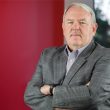Is the smart grid at the beginning of the ‘hype cycle’?
Since 1995, the analyst firm Gartner has used the notion of a “hype cycle” to describe the over-enthusiasm and following disappointment that typically happens when new technologies are introduced into the market. It lists five phases of a hype cycle that begins with a technology breakthrough, followed by over-inflated expectations and then a period of disillusionment, when the grand pronouncements are gone and little is said about the technology. Meanwhile, behind the scenes, businesses continue to experiment to understand the practical applications of the technology. And finally, the hype cycle is over, as the benefits of the technology become widely accepted.
I see the smart grid at the beginning of this hype cycle. Much is being touted about utility companies’ ability to transform their businesses, improve the environment and benefit people who buy energy by delivering the exact amount of power needed to businesses and residences. Lots of money is pouring into the sector, the technology pieces are coming together and mobile operators are on board with various “connected devices” initiatives.
But some of the critical ingredients are still missing. Mobile operators aren’t exactly aligned with the needs of utilities at this point. And, once all of this information is collected about power consumption and availability, how do you store it and act on it?
Shahid Ahmed, a partner with Accenture Consulting, believes mobile operators have a golden opportunity when it comes to providing connectivity for the smart grid. But they do not yet meet the scale, coverage and prioritization requirements of the smart grid. Operators also must adjust their pricing schemes. What is charged for delivering mobile data today to consumers could never be an economical proposition for utilities.
Even if utilities build their own WiMAX or other high-speed networks, the challenges are the same, and utilities will have to partner with operators at some point for those hard-to-reach areas.
This sentiment was echoed earlier this month during the CTIA IT & Entertainment trade show, where Chris Baker, CIO of San Diego Gas & Electric, appealed to the mobile operator industry for its help. His organization is the first utility in the U.S. to roll out full two-way communications with in-home control. Some 1.4 million San Diego gas customers have this capability with the aim to connect all 23 million by 2011.
However, his organization will require millions of sensors across thousands of miles of pipes that span the desert and mountainous regions. The only way to monitor the entire area is via mobile broadband networks.
Meanwhile, the connectivity may be coming along in the smart grid space, but the ability to input data and determine the correct response to a variety of issues isn’t quite there. In short, what do you do with all of that data? We could also talk about the privacy issues associated with storing that data, but that’s complex enough to require another column altogether.
The smart grid is promising, and for me as a consumer, can’t come soon enough. Who wouldn’t want to reduce their power bill by 20% or more? But it may be a few more years before the full vision is fully realized — we have to hit the period of disillusionment first.

















